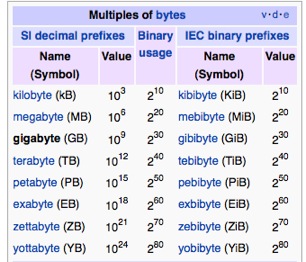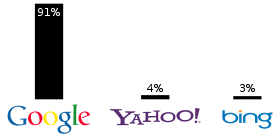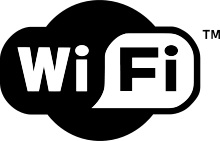Article
A LEXICON OF COMPUTER TERMS
Part I
The computer world is moving so swiftly that it's hard to keep up with all the esoteric terms, acronyms and short-names in use. Below is the first part of a new lexicon of words about computers, computing, and the Internet we will be publishing during the next few weeks and months that may help orient some of our readers to this "new world order." For those of us in the 5th, 6th, 7th (or 8th!) decades, these terms can be a challenge! ...The Editor
Note: This lexicon was compiled using definitions acquired through Google, Wikipedia, and other internet search engines.
404 - an HTTP standard response code meaning that the requested Web page could not be located. Also: Clueless about technology. As in "Joe walked out of that meeting looking completely 404."
Bandwidth - is a bit rate measure of available or consumed data communications resources expressed in bits-per-second or multiples (kilobits-per-second, megabits-per-second, etc.). The rate by which data is transmitted or received dramatically affects the utility of the Internet for users. A "slow" connection can make working on the Internet nearly unendurable.
Bandwidth hog – a derogatory term for a user of an internet connection who uses more bandwith than other users on the network.
Broadband refers to a telecommunications signal of greater bandwidth, in some sense, than another standard or usual signal. The "broader" the band, the greater the capacity for traffic. Different criteria for "broad" have been applied in different contexts and at different times.
History: The term's origin is in radio systems engineering, but became popularized after MediaOne adopted it as part of a marketing campaign in 1996 to sell their high speed data access. The slogan was "This is Broadband. This is the Way”. The term has never been formally defined, even though it is widely used, and has been the subject of many policy debates, including in the FCC's controversial "National Broadband Plan."

History: The term has been used in some fields of computer science and information technology. In 2000, however, Institute of Electrical and Electronics Engineers or IEEE (read: "eye-triple-ee") adopted the metric prefix interpretation of the term.
HTTP - hyper-text transfer protocol: a protocol (utilizing TCP) to transfer hypertext requests and information between servers and browsers.
IP Address - A unique number which identifies a computer and its location on the internet.
Web search engine – a function on the Internet designed to search for information on the World Wide Web and FTP servers. The search results are generally presented as a list of results called hits. The information usually consists of active links to web pages, images, information and other types of files. Some search engines also "mine data" available in databases or open directories. Search engines operate based on a programmed algorithm, rather than randomly. These algorithms are proprietary information, and guarded zealously by their owner/operators who work continuously to refine and upgrade them.

Three most widely used Web Search Engines and their approximate share of traffic!
History: Within the past decade, Google.com has become the preeminent search engine on the Internet, with others such as Yahoo.com or Ask.com lagging very far behind.
The grandma of the bunch, AltaVista, was created and launched in 1995 as a internet search engine in 1995, as: altavista.digital.com by researchers at Digital Equipment Corporation's Western Research Laboratory who were trying to provide services to make finding files on the public network easier. AltaVista provided a free translation service, branded Babel Fish, which automatically translates text between several languages. (In May 2008, this service was re-branded as a part of Yahoo!.com) AltaVista itself became one of the top destinations on the web, and by 1997 had earned US$50 million in sponsorship revenue. It was acquired by Yahoo! in 2002 but never regained its top spot in the search engine world.
Google.com was not launched until 1998, but became a near-instant hit, as it counted not merely the number of "hits" a website obtained, but also how many links to and from a specific website were coming from the wider Web. The company was founded by Larry Page and Sergey Brin, often dubbed the "Google Guys", while the two were attending Stanford University as Ph.D. candidates. It was first incorporated as a privately-held company on September 4, 1998, with an IPO of stock on August 19, 2004. The company's mission is: "to organize the world's information and make it universally accessible and useful", and the company's unofficial slogan – coined by Google engineer Paul Buchheit – is "Don't be evil". Google runs over one million servers in data centers around the world, and processes over one billion search requests every day. Google (and Yahoo!) rank various websites by industry in terms of the number of hits and links they receive. A high Google rank is an important marketing credential.
TCP - The Transmission Control Protocol (TCP) is one of the core protocols (software programs) of the Internet Protocol Suite (IP). Often called TCP/IP. TCP provides reliable, ordered delivery of a stream of bytes from a program on one computer to another program on another computer. TCP is the protocol that major Internet applications rely on, applications such as the World Wide Web, e-mail, and file transfer. It works by allowing one computer to send the other a continuous stream of information by breaking it into packets and reassembling it at the other end.
URL - A Uniform Resource Locator (URL) specifies where an identified resource is available and the mechanism for retrieving it.
Example: A URL is a unique address for a web page on the World Wide Web, such as http://www.revmag.com/ The grammar of a URL is strict; a typo will disable the link to the website.
History: The classic URL format is based on Unix language file path syntax, where forward slashes are used to separate a directory from a file or resource name. The double forward slash was already in use at the time as a way to separate a server from a file path.

Wi-Fi (pronounced /"why-Fy"/) is not a technical term. It is actually a trademark of the Wi-Fi Alliance, a trade association that promotes the use of wireless local area network (LAN) technology, and certifies products if they conform to certain standards of operability. The lack of the Wi-Fi logo does not necessarily imply a device is incompatible with Wi-Fi devices.The Alliance has generally enforced its use to describe only a narrow range of connectivity technologies including WLAN (wireless LAN). Wi-Fi products that successfully complete the Wi-Fi Alliance's Wi-Fi Certification testing may use the Wi-Fi designation and trademark. While the Wi-Fi Alliance owns the Wi-Fi trademark, manufacturers may use the trademark to brand certified products that belong to a class of LAN devices based on the IEEE's 802.11 standards. (The lack of Wi-Fi certification does not necessarily imply a device is incompatible with Wi-Fi devices/protocols. If it is compliant or even partly compatible, the Wi-Fi Alliance may not object to its description as a Wi-Fi device though technically only the CERTIFIED designation is based on their approval.)
A Wi-Fi enabled device such as a personal computer, video game console, smartphone or digital audio player can connect to the Internet when it comes within range of a wireless network connected to the Internet. The coverage of one or more (interconnected) access points — also called hotspots — generally comprises an area the size of several rooms, but may be expanded to cover an entire airport or many square miles, depending on the number of access points within the overlapping coverage.
Wi-Fi is currently in use by over 700 million people, there are over 750,000 hotspots (places with Wi-Fi Internet connectivity) around the world, and about 800 million new Wi-Fi devices come into the network every year. Wi-Fi certified and compliant devices are installed in a wide range of newer technologies such as many personal computers, video game consoles, MP3 players, 'smartphones', printers, digital cameras, and laptops.





















